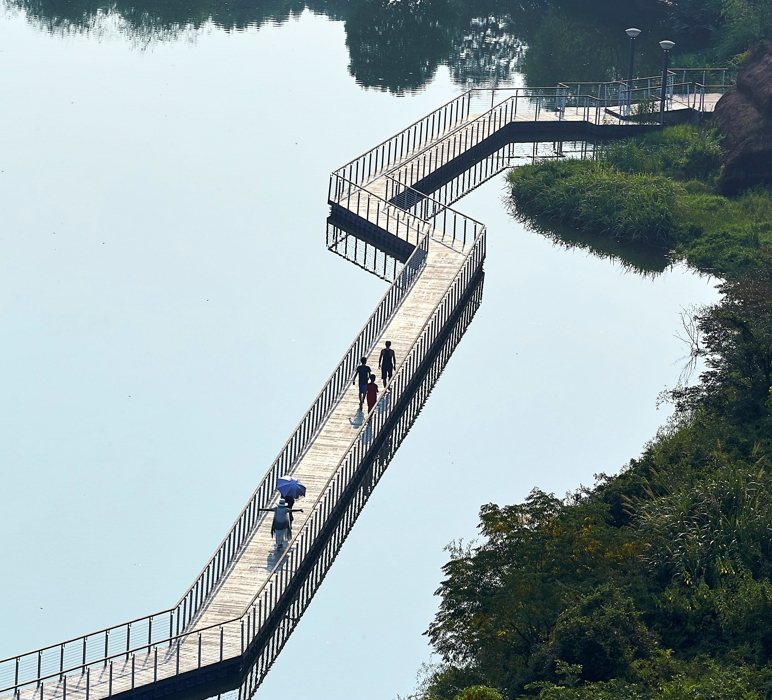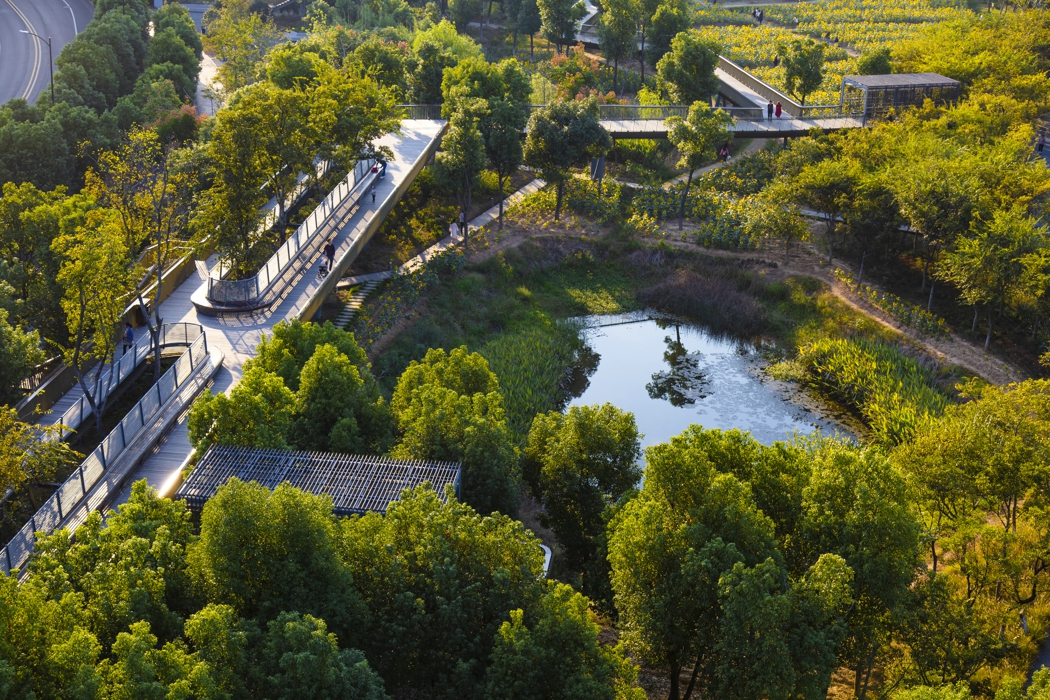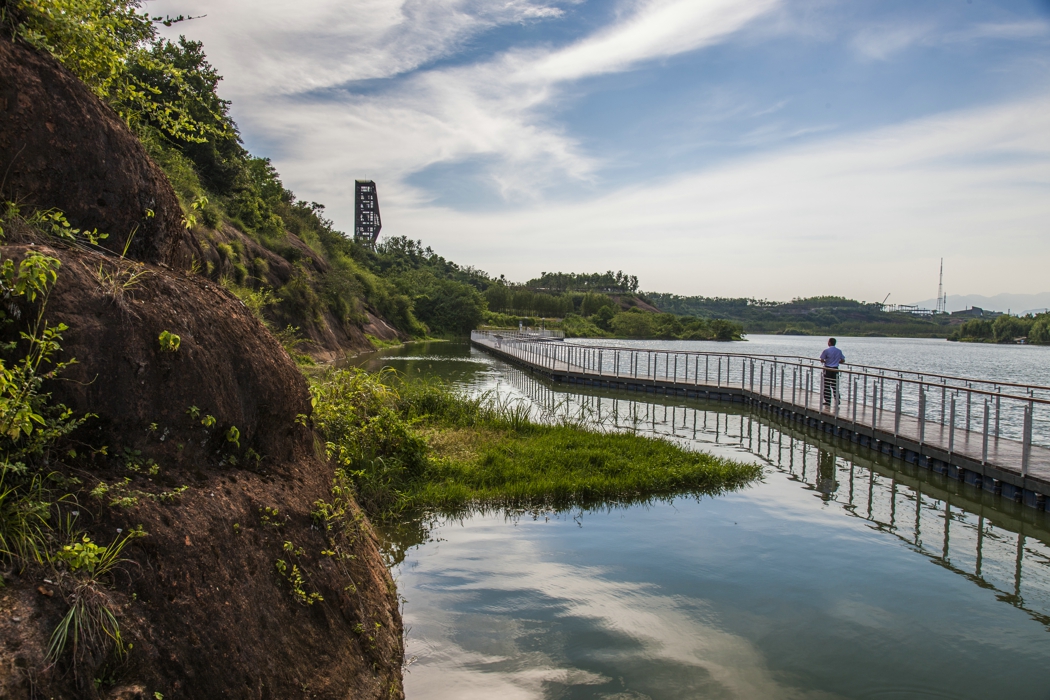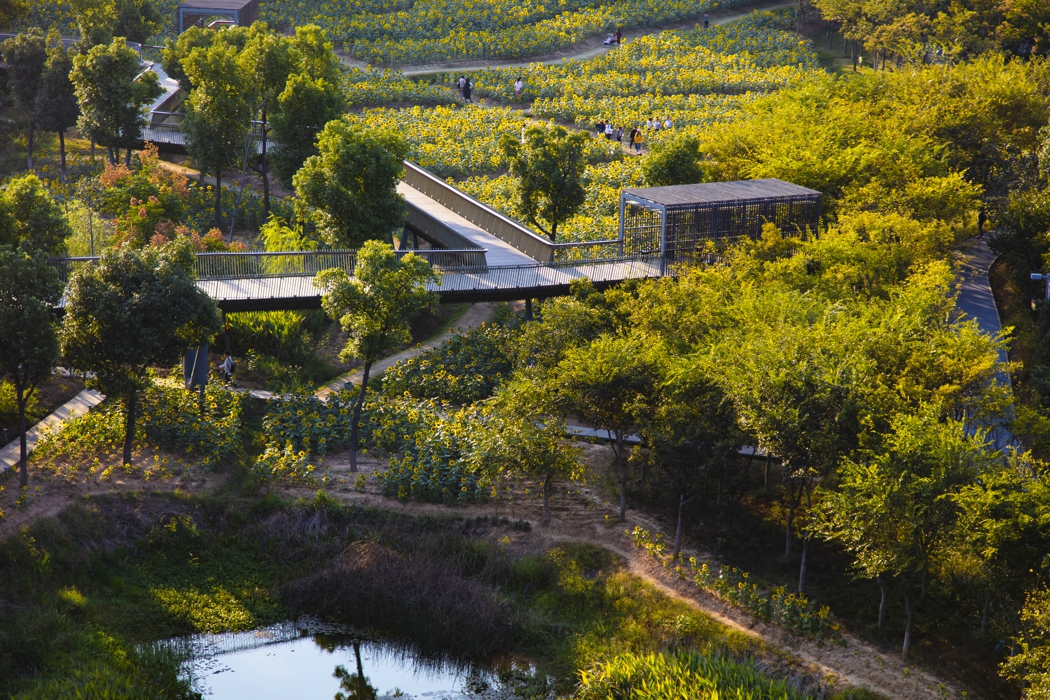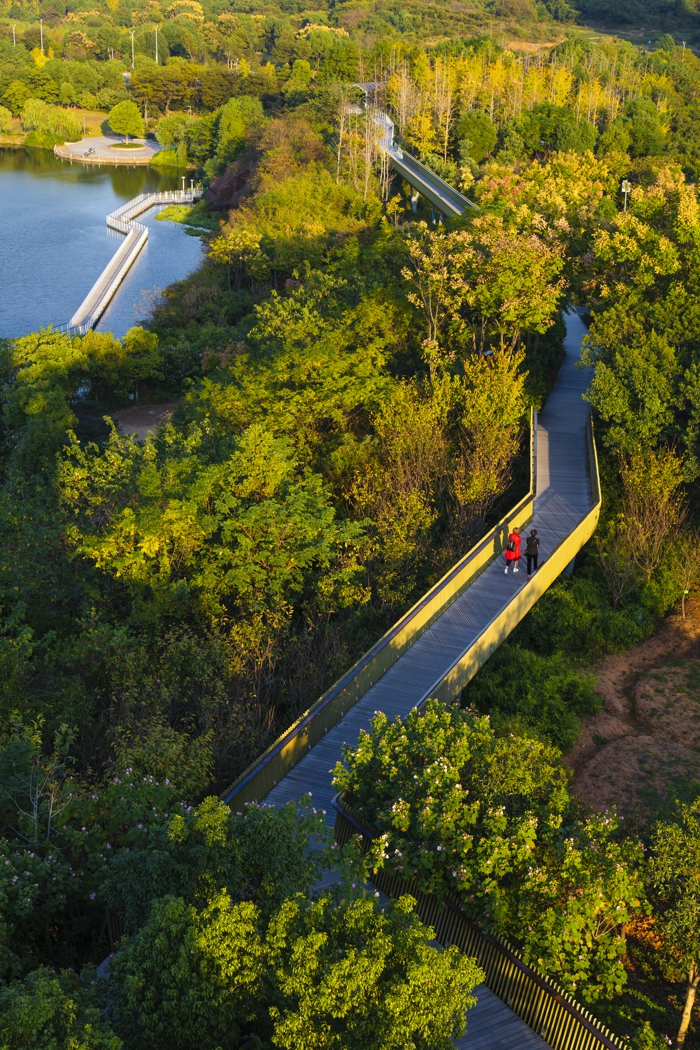Quzhou Luming Park Floating Bridge
Project Information
- Project Location:
- China Quzhou, Zhejiang
- Project Scale:
- 150m
- Design Time:
- May 2014
- Build Time:
- July 2015
- Award List:
- 2015 China Environmental Art Award Gold Prize, 2017 Landscape Architecture of AZ Awards,2016 ASLA Honor Awards
- Related Papers
Project Profile
Quzhou is a historic city with over 1,800 years of history and a notable strategic location on China’s eastern coast. During WWII, Quzhou’s small airport was once considered a planned landing site for American bombers following the Doolittle Raid on April 18, 1942.
Luming Park spans approximately 32 hectares and is surrounded by dense urban development. It is bordered by the Shiliang Creek to the west and a major urban thoroughfare to the east. The site features a diverse topography, including red sandstone hills, riverbanks, sandy shoals, farmland, shrublands, and native forests of Chinese wingnut trees. Scattered throughout are rural landscape relics such as cobblestone paths, pavilions, irrigation canals, and water-lifting stations.
The 150-meter-long floating bridge is designed with deep respect for the site’s cultural and ecological heritage. Natural features—such as red sandstone outcrops, native grasses and shrubs, farmlands, and existing trees—were all preserved. Historical elements including the rural paths and irrigation infrastructure were restored to maintain a sense of place and memory. The bridge deck is supported by HDPE pontoons (500×500×400 mm), with decking composed of outdoor bamboo-wood boards (137 mm × 20 mm) fixed on 50×50 mm galvanized steel joists. Railing gaps are 700 mm, allowing clear views of the surrounding scenery.
A scenic elevated walkway winds through the terrain—hugging the hills and hovering over the water—offering panoramic views rarely found in urban settings. This corridor, with its rhythmic curves and rest platforms, reveals a poetic landscape where "sunset and lone birds fly together; autumn waters share one hue with the vast sky."
